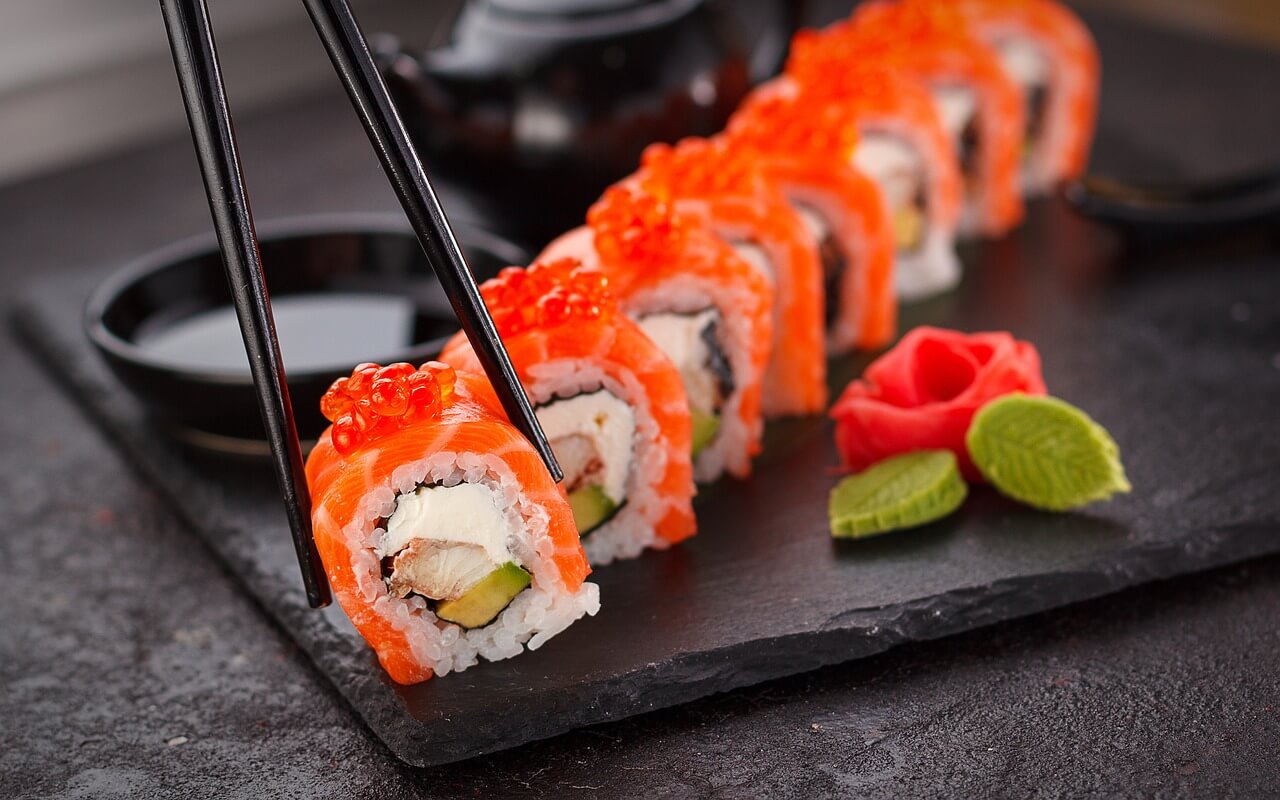12 Fascinating Sushi Facts for Japanese Food Lovers
There’s no denying that Japanese food is loved the world over. Many of those who discovered it late in life say that there’s just such a unique allure to Japanese cuisine that even if their initial encounter with it was too weird, they ended up craving and loving it after a while.
One of the best qualities of Japanese cuisine is its focus on highlighting the natural flavours of the ingredients. This is why all authentic Japanese restaurants always try to make use of seasonal ingredients when their flavours are at their peak.
Another admirable quality of Japanese food is the artistry involved. Take, for example, sushi. These bite-sized treats are real works of art in terms of form, colour, and even story. Top sushi chefs say it usually takes two to six months just to get the sushi rice perfect. Plus, years and years to master the other components of sushi to make it an utterly delightful meal.
If you are a big sushi fan and you wish to know more about it, here are 12 other interesting facts about it.
- Most sushi restaurants make sure the rice is the same temperature as the human body, which is about 34 to 36 degrees celsius. Therefore, there’s more enjoyment to freshly prepared sushi than pre-packed ones that you can now get in a lot of convenience stores.
- There all kinds of possibilities for sushi when it comes to fish and shellfish. Practically any fish is good enough as long as it’s not poisonous and does not spoil quickly. Pufferfish or Fugu though, which is highly poisonous, can be prepared as sushi. However, only certified Fugu specialist chefs are allowed to serve it. It takes an advanced technique to properly remove the skin and entrails of the Fugu, where the poison’s located is located.
- An easy chew is a must for sushi.Therefore, sushi chefs implement different cutting techniques to make fish or seafood meat easy to chew down.
- The cuts for the fish and seafood of sushi are not just for a better chew. The tiny slices on them are also for art and better flavour. The dipping sauce for sushi adheres better when seafood and fish have small cuts on them.
- In a comparison experiment, handmade sushi proved to have better structural integrity than a machine prepared one. When both were placed in a wind tunnel test, the slice of fish on top of the sushi prepared by a master stayed put for much, much longer than the one made by a machine and a novice.
- Sushi prepared by a master boasts of rice that’s not smooshed. One of the hallmarks of great sushi is the shape of every grain of rice. If a true expert constructs it, the shape is compact, but every grain of rice maintains its natural shape.
- If you don’t want to look like a novice at eating sushi, ditch the chopsticks and use your thumb and middle finger. Not only is this more comfortable, but you can also be sure that the sushi will hold its shape when you dip it in the sauce.
- If you still want to use your chopsticks for eating sushi, flip the sushi sideways so you can pick it up from the top and bottom.
- Battleships inspired Gunkan-maki, a popular style of sushi. And, contrary to most people’s belief, it has not even been around for a hundred years. In a way, it’s still a contemporary style. The keys to good gunkan-maki are the shape and the crispiness of the nori or seaweed.
- The sauces for sushi are either something you dip your sushi into or brushed by the chef. Whatever may be, trust that it’s the best way to boost the flavour of the roll.
- Sushi doesn’t always use raw fish. Konger eel, for instance, is usually grilled first and brushed with sauce, or sprinkled with salt. The same thing with tuna, which a lot of sushi chefs like to broil because of its similarity to prime Wagyu beefwith its beautiful fat marbling.
- Sushi’s conquest of the West began in the 1970s. Paris, the home of gourmet cooking, was particularly fascinated with sushi. In fact, a lot of the sushi restaurants that were set up in the French capital during that era still remain. Plus, many more have popped up through the years. In the Middle East, on the other hand, sushi continues to gain popularity due to the presence of the best international Japanese restaurants in cities like Abu Dhabi and Dubai. Local women, particularly love it because they see it as healthy food.
Indeed, sushi is fascinating. It’s no wonder sushi chefs are committed to discovering new ways of preparing it and giving it new flavours, and characters. Next time, you celebrate life at a Japanese restaurant, explore all the different sushi options and gain great delight from the experience.
